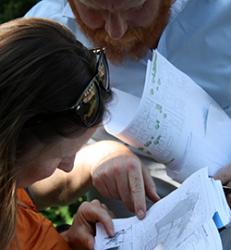This is the first in what we hope will become a regular Mistra Urban Futures blogspot, to which various voices from our LIPs and partners will contribute. To get the ball rolling, it is perhaps appropriate that I am writing from COP21 in Paris, where I have been representing MUF for the last couple of days and taking the temperature, so to speak, of negotiations and – equally importantly – the expectations surrounding them.
My strongest impression, substantiated by others I have spoken to, is that cities and urban climate change issues are considerably more in evidence than previously. They may still merit only fleeting mention in the final UNFCCC text that emerges as the Paris declaration/agreement, but the urban imprint in what is happening here is very tangible. Paris as host has its own stand but individual cities and urban associations are evident in many national pavilions or in the displays on regional associations, international agencies and NGOs and the like. These include, most conspicuously, UN-HABITAT and ICLEI but the Mayors’ Compact, UCLG and others are also in evidence. Equally importantly, mayors from the Nordic countries and elsewhere, are here in person, participating in events and seeking to ensure that their countries’ UNFCCC negotiators keep ‘the urban’ firmly in mind.
The side event in which I participated yesterday, ‘National government, Nordic Cities and Mayors Looking beyond Paris’ and held in the pavilion of the Nordic Council of Ministers, symbolised the coalitions of interests gelling around the importance of multilevel governance for effective action on climate change. First off was Mehmet Kaplan, the Swedish Minister of Housing and Urban Development, a veteran of Habitat II in Istanbul and friend of Mistra Urban Futures. He was followed by Bo Frank and Dagur Eggertsson, mayors of Växjö and Reykjavik respectively, myself and then Renat Heuberger, CEO of the Southpole Group thinktank/advocacy firm. Really heartening was the consistency and complementarity of the issues raised, priorities articulated and examples of good practice and necessary change cited.Most of us were later interviewed live on air by Kaj Embren, the session organiser and facilitator. Anneli Hulthén, outgoing mayor of Gothenburg, was speaking at another event yesterday.
More generally the mood pervading the Le Bourget summit venue – and the tens of thousands of participating indigenous group and community and NGO activists, advocacy groups, local and regional authorities and national government delegations (the Parties to the UN Convention) – is cautiously optimistic. Cautious in view of all the past disillusionment and frustration that have dogged the UNFCCC negotiation process since the hype, hope and expectations in the build-up to and during COP15 in Copenhagen – which I also attended as I was doing some work there for UN-HABITAT. Optimistic because the world has moved on, the evidence of advancing climate change and its effects (not least on and in urban areas) is clearer than ever and more rapid than previously anticipated, and because some of the coalitions of interest around the negotiation process have changed tangibly.
Interestingly, perhaps, African solidarity has probably deepened, despite the wider diversity of active engagement with climate change challenges evident on the continent. Last night I listened to several of the African negotiators reporting soberly and admitting to some continuing frustration, not least in terms of responses to their and other G77 efforts to get the target mean global temperature increase reduced from 2C to 1.5 and the voluntary nature of national emissions target reductions forming the basis of the current initiative. One hopeful sign was the specialist on gender rights reporting satisfaction at progress. In answer to a question, the Ghanaian doyen of African negotiators summed up their collective perspective by saying that he expected a deal, albeit one that would fall short of the more substantial demands in terms of temperature target, INDC (intended nationally determined contributions) and the size of the global fund to assist ‘developing countries’ to adapt.
In contrast, I have just attended a press conference by the chief US negotiator, Todd Stern, who reflected the very different posture of the US government under Obama. He referred to the US as a key member of what he described as the emerging ‘high ambition coalition’, outlined the substantial interventions by his government on vehicle and power plant emissions (two sectors together accounting for two thirds of total US emissions) under existing legislation, and expressing a sense that considerable progress has been made already during this week in narrowing the areas and text on which disagreements remain. Although indicating that a 1.5 degree target would not be feasible to include at this late stage since the 2C ‘safe limit’ was so well established, he confirmed that the final text would indeed contain clear human rights and gender statements. The atmosphere in the press conference was calm and no hostile questions emerged.
If a week is a long time in politics, it is a very long time in global governance negotiations. How far the remaining gaps can be closed remains to be seen but with so much at stake and the Habitat III summit just 10 months away, we can but hope that the interests in favour of a deal embodying meaningful emissions reductions and a viable global adaptation fund will prevail over those against.







